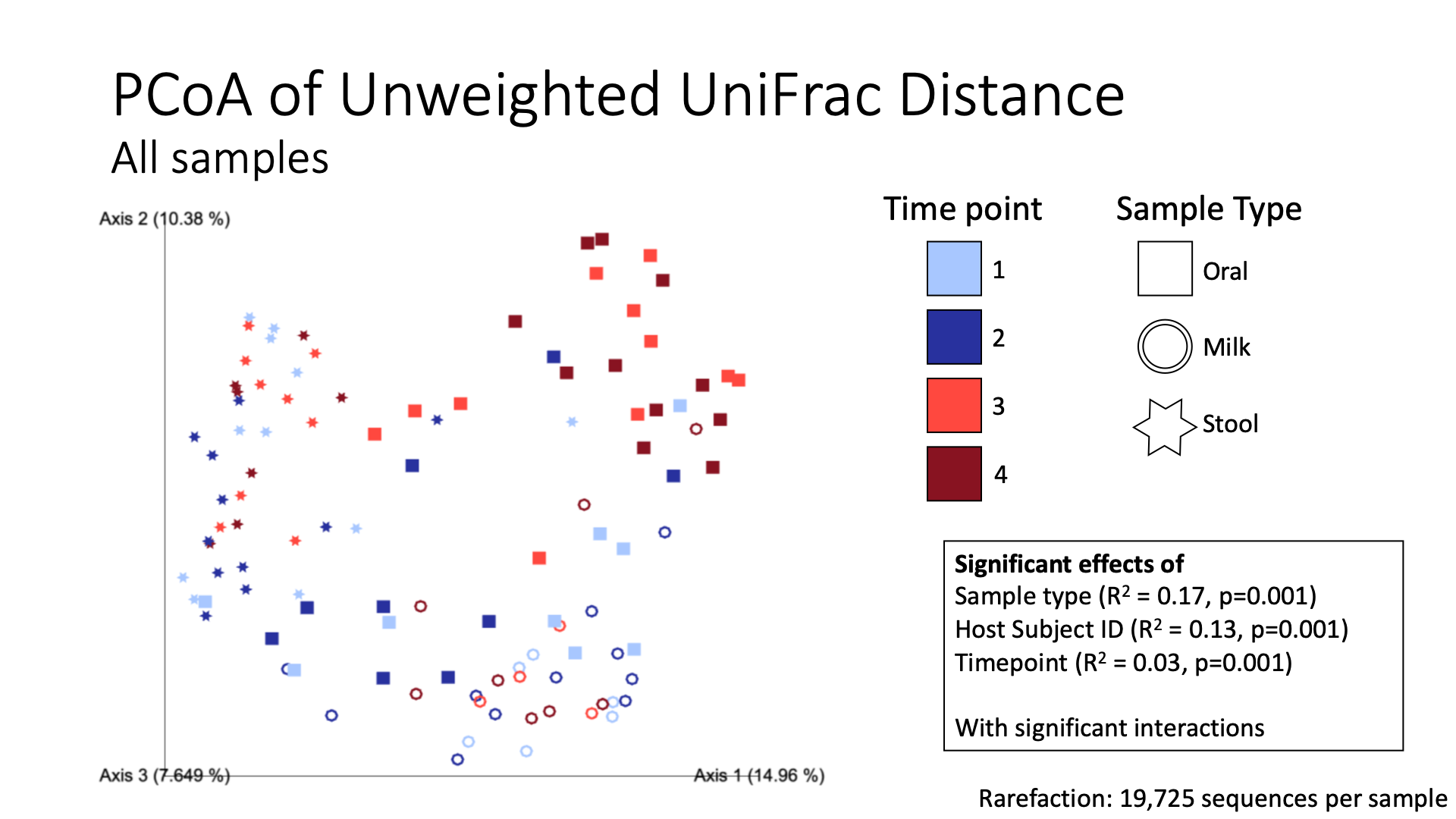Neonatal General
Neonatal General 4: GI-Nutrition-Growth
680 - The Effects of Oral Feeding on the Preterm Infants’ Microbiome and Metabolome
Publication Number: 680.232
- KS
Keriann M. Schulkers Escalante, DO, MPH (she/her/hers)
Neonatal-Perinatal Fellow
University of California, San Diego School of Medicine
San Diego, California, United States
Presenting Author(s)
Background:
Breast milk is beneficial for preterm infants. The route of feeding (tube, bottle, breast) may impact the infants microbiome and/or metabolome which may have long-term impacts on health.
Objective:
The purpose of this study is to determine how the mode of feeding breastmilk impacts the maternal breastmilk and the infants’ oral and gut microbiome and metabolome.
Design/Methods:
A cohort of samples of maternal milk and infant’s stool and saliva were collected from: “The Association Between Milk Feedings, the Microbiome and Risk of Atopic Disease in the Preterm Population (MAP) Study” (NCT04835935). Infants < 34 weeks gestational age were recruited. Microbiome and metabolome profiles were analyzed in a sub cohort of 11 infants. For each infant, 4 longitudinal samples (two prior to the start of oral feeds and two after starting oral feeds) were collected. Metabolites were analyzed by untargeted gas chromatography-mass spectrometry and Kruskal-Wallis H test was used for statistical analysis. Bacterial compositions were analyzed by shotgun metogenomic. Differences in bacterial community composition were compared using a permutational multivariate analysis of variance.
Results:
Analysis of the milk samples showed that sample collection time had a significant impact on microbial community composition (R2=0.06, p=0.002) and that microbial diversity decreased temporarily after the first feed (p=0.04). The infants’ saliva samples showed increased microbial diversity over time (p=0.009) and had a significant time impact on community composition (R2=0.12, p=0.001). Stool microbial diversity did not change with feeding type but was highly associated with participant (R2=0.39, p=0.001). (See Figure 1.) When looking at the genus level community changes within saliva samples, we found a shift towards increased Streptococcus and decreased Staphylococcus after oral feeding initiation. Metabolomic analysis is in process.
Conclusion(s):
Our preliminary analysis has demonstrated that the maternal milk and preterm infant’s microbiome changes after the initiation of oral feeds. The changes in the genus level community within the saliva sample may reflect changes seen in the milk samples as well as increased exposure to skin. While no significant changes were seen in the diversity of the stool samples, this is likely be driven by participant microbiomes being too different from each other to detect common effects without higher replication. Given the importance of the infant’s microbiome and metabolome on their short- and long-term outcomes, further research is needed to help identify the impact of enteral feeding tubes.
